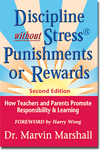|
 |
| Teachers.Net Gazette Vol.5 No.10 | October 2008 |
Subscribe for free home delivery |
|
The Brain and Sleep Our brains are busy while we sleep! Dr. Marshall discusses how the brain works during sleep, and how much sleep we REALLY need. | |
| by Dr. Marvin Marshall www.MarvinMarshall.com Regular contributor to the Gazette October 1, 2008 |
|
 The brain evolved to use light and darkness wisely: acquire information by day; process it at night. The effects of sleep on memory are impressive. Recent discoveries show that sleep facilitates the active analysis of new memories, allowing the brain to solve problems and infer new information. The "sleeping brain" may also be selectively rehearsing the more difficult aspects of a newly learned task. We may be able to get by on six hours sleep, but if we want to optimize learning and memory, closer to eight hours is better. Only with more than six hours of sleep does performance improve over the 24 hours following the learning session, according to the researchers, Robert Stickgold of Harvard University and Jeffrey Ellenbogen of Massachusetts General Hospital, who both study the interactions of sleep and cognition. (Scientific American MIND, August/September 2008, pp. 22 - 29) The latest research suggests that while we are peacefully asleep, our brain is busily processing the day's information. While we sleep, the brain combs through recently formed memories, stabilizing, copying and filing them so that they will be more useful the next day. A night of sleep can make memories resistant to interference from other information and allow us to recall them for use more effectively the next morning. Apparently, science is proving what I had intuitively known as a student. I would always study what I wanted to remember just before going to bed at night. Sleep, in all of its various phases, does something to improve memory that being awake does not do. Sleep not only strengthens memories, it also lets the brain sift through newly formed memories. The process can also identify what is worth keeping and selectively maintaining and enhancing memory. The brain may have to shut off external inputs because unconscious cognition appears to use the same brain resources that are used for processing signals when we are awake. When memory contains both emotional and unemotional elements, sleep can save the important emotional elements and let the less relevant background drift away. This processing plays a crucial role in the evolution of emotional memories. Also, during sleep collections of memories are analyzed, and new relationships among inputs are made. Sometimes this processing helps find the meaning in what we have missed. In a nutshell, the brain needs time after we learn to process the learning, and sleep provides the maximum benefit. Or to put it more simply, the brain learns while we sleep. Points to Remember:
Copyright © 2008 Marvin Marshall. Additional information is available at www.MarvinMarshall.com
| |
|
 Cover Story by Eric P. Jensen
Cover Story by Eric P. Jensen

 His approach is the only system that is proactive, totally noncoercive, and does not use external manipulatives or threats. He INDUCES students to WANT to act responsibly and WANT to put forth effort to learn.
His approach is the only system that is proactive, totally noncoercive, and does not use external manipulatives or threats. He INDUCES students to WANT to act responsibly and WANT to put forth effort to learn.
